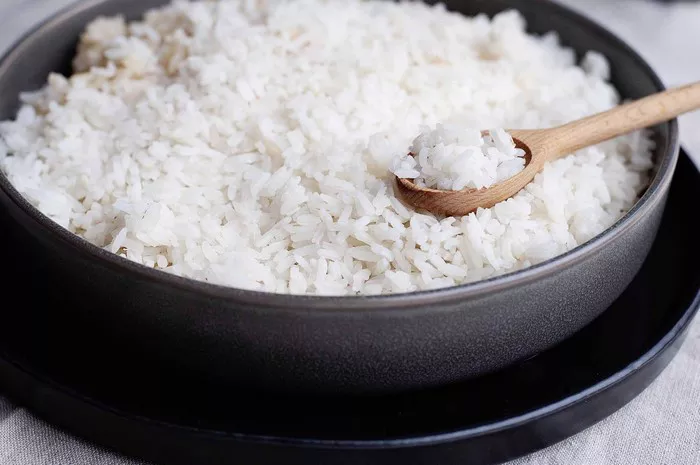White rice is a staple food in many cultures worldwide. It is known for its versatility and ease of preparation. However, for individuals with diabetes, managing carbohydrate intake is crucial to controlling blood sugar levels. This article will explore how much white rice a diabetic can eat, the impact of white rice on blood sugar levels, and alternatives to consider for a balanced diet.
Understanding Diabetes and Carbohydrate Intake
Diabetes is a chronic condition characterized by elevated blood sugar levels due to the body’s inability to produce or effectively use insulin. There are two main types of diabetes: Type 1 and Type 2. Individuals with diabetes need to manage their carbohydrate intake to maintain stable blood sugar levels.
What Are Carbohydrates?
Carbohydrates are one of the three macronutrients that provide energy for the body. They are divided into three main categories:
Sugars: Simple carbohydrates found in foods like fruits, honey, and table sugar.
Starches: Complex carbohydrates found in foods like bread, pasta, and rice.
Fiber: Indigestible carbohydrates found in fruits, vegetables, whole grains, and legumes.
When consumed, carbohydrates are broken down into glucose, which enters the bloodstream. This increase in blood glucose levels prompts the pancreas to release insulin, allowing cells to use the glucose for energy. For individuals with diabetes, managing carbohydrate intake is essential to avoid spikes in blood sugar levels.
Why White Rice Matters
White rice is a refined carbohydrate, meaning it has been processed to remove the bran and germ layers. This process gives white rice its soft texture and long shelf life, but it also removes much of its fiber and nutrients. As a result, white rice has a high glycemic index (GI), which indicates how quickly a food raises blood sugar levels. Foods with a high GI can lead to rapid spikes in blood glucose, making them more challenging to manage for individuals with diabetes.
Glycemic Index of White Rice
The glycemic index of white rice varies depending on the type and cooking method. However, it generally falls within the high GI range, typically between 56 and 94. Here are some common types of white rice and their approximate GI values:
Long-grain white rice: GI of 56-69
Medium-grain white rice: GI of 69-79
Short-grain white rice: GI of 70-94
For comparison, foods with a GI of 55 or lower are considered low-GI foods, while those with a GI of 70 or higher are high-GI foods. Since white rice falls into the high-GI category, it can lead to rapid increases in blood sugar levels if consumed in large quantities.
How Much White Rice Can a Diabetic Eat?
Determining how much white rice a diabetic can eat depends on several factors, including:
Individual health status: Each person’s diabetes management plan may differ based on factors like weight, activity level, and overall health.
Carbohydrate counting: Many individuals with diabetes use carbohydrate counting to manage their intake. This approach involves monitoring the number of carbohydrates consumed in meals and snacks.
Portion control: Controlling portion sizes is essential for managing blood sugar levels effectively.
General Guidelines for Rice Consumption
Consult a Healthcare Professional: It’s essential to work with a registered dietitian or healthcare professional to create a personalized meal plan that considers your unique needs and preferences.
Portion Size: A typical serving size of cooked white rice for a person with diabetes is about 1/3 to 1/2 cup (approximately 45-75 grams). This portion contains around 15-30 grams of carbohydrates.
Balance with Other Foods: When consuming white rice, balance it with other foods that are lower in carbohydrates and high in fiber. This can help slow the absorption of glucose into the bloodstream.
Monitor Blood Sugar Levels: After consuming white rice, monitor your blood sugar levels to understand how it affects your body. This can help you adjust your portion sizes and meal combinations.
Consider Cooking Methods: Cooking white rice with added fat, such as olive oil or coconut oil, can lower the glycemic index. Additionally, cooling cooked rice before consuming it can increase resistant starch levels, which may have a lower impact on blood sugar.
Example Meal Plans with White Rice
To illustrate how white rice can fit into a diabetic meal plan, here are a few examples of balanced meals that include white rice:
Breakfast
- 1/2 cup of cooked white rice with scrambled eggs and sautéed spinach
- 1 small apple or a handful of berries
Lunch
- 1/2 cup of cooked white rice with grilled chicken, steamed broccoli, and a side salad with vinaigrette dressing
Dinner
- 1/2 cup of cooked white rice served with baked salmon, roasted Brussels sprouts, and a small mixed greens salad
Risks of Consuming White Rice
While white rice can be part of a balanced diet for individuals with diabetes, it also comes with certain risks:
Blood Sugar Spikes: Consuming large portions of white rice can lead to rapid increases in blood sugar levels, making it difficult to manage diabetes effectively.
Nutrient Deficiency: White rice is lower in fiber and essential nutrients compared to whole grains. Relying too heavily on white rice can result in nutrient deficiencies over time.
Weight Management: High-carb foods like white rice can contribute to weight gain if consumed excessively. Maintaining a healthy weight is essential for managing diabetes effectively.
Increased Risk of Diabetes: Some studies suggest that frequent consumption of white rice may be associated with an increased risk of developing Type 2 diabetes.
Alternatives to White Rice
Individuals with diabetes may benefit from considering alternatives to white rice that provide more fiber, nutrients, and a lower glycemic index. Here are some healthier options:
1. Brown Rice
Brown rice is a whole grain that retains its bran and germ layers, providing more fiber and nutrients than white rice. It has a lower glycemic index (approximately 50-55), making it a better choice for individuals with diabetes. A serving size of cooked brown rice is similar to white rice, typically around 1/2 cup.
2. Quinoa
Quinoa is a high-protein grain that is gluten-free and rich in fiber. It has a lower glycemic index than white rice and can help keep blood sugar levels stable. A serving size of cooked quinoa is about 1/2 cup.
3. Cauliflower Rice
Cauliflower rice is a low-carb alternative to traditional rice. It is made by grating or processing cauliflower into small rice-like pieces. Cauliflower rice is low in calories and carbohydrates, making it an excellent choice for individuals looking to reduce their carb intake.
4. Barley
Barley is a whole grain that is high in fiber and has a lower glycemic index than white rice. It can be cooked and used as a base for salads or served as a side dish. A serving size of cooked barley is about 1/2 cup.
5. Lentils
Lentils are legumes high in protein and fiber. They have a low glycemic index and can be used in salads, soups, or as a side dish. A serving size of cooked lentils is about 1/2 cup.
Tips for Including White Rice in a Diabetic Diet
If you choose to include white rice in your diet, here are some practical tips to help manage your blood sugar levels:
1. Combine with Protein and Fiber
Always pair white rice with protein sources (like chicken, fish, or beans) and high-fiber vegetables (like broccoli or spinach). This combination can help slow digestion and stabilize blood sugar levels.
2. Practice Portion Control
Measure out your portions to avoid overeating. Stick to the recommended serving size of 1/3 to 1/2 cup of cooked white rice.
3. Monitor Blood Sugar Levels
Regularly check your blood sugar levels before and after meals to understand how different foods, including white rice, affect your body.
4. Experiment with Cooking Methods
Try cooking white rice with broth or adding spices to enhance flavor without adding extra calories or carbohydrates. Additionally, cooling the rice after cooking can help increase resistant starch levels.
5. Stay Hydrated
Drink plenty of water throughout the day. Staying hydrated can help your body function better and manage blood sugar levels.
Consult a Healthcare Professional
It’s essential to consult with a healthcare professional or registered dietitian when planning your diet as a diabetic. They can help you create a personalized meal plan that suits your lifestyle, preferences, and health needs.
Conclusion
White rice can be included in a diabetic diet, but moderation and careful management are crucial. Understanding carbohydrate intake, portion sizes, and how white rice affects blood sugar levels will help individuals with diabetes make informed choices. Alternatives like brown rice, quinoa, and cauliflower rice offer nutritious options that can help maintain blood sugar stability.
By combining white rice with protein and fiber, practicing portion control, and monitoring blood sugar levels, individuals with diabetes can enjoy a balanced diet while minimizing risks. Always consult with a healthcare professional for personalized guidance and support in managing diabetes effectively.
Related topics:
What Should Diabetics Eat Most?



























